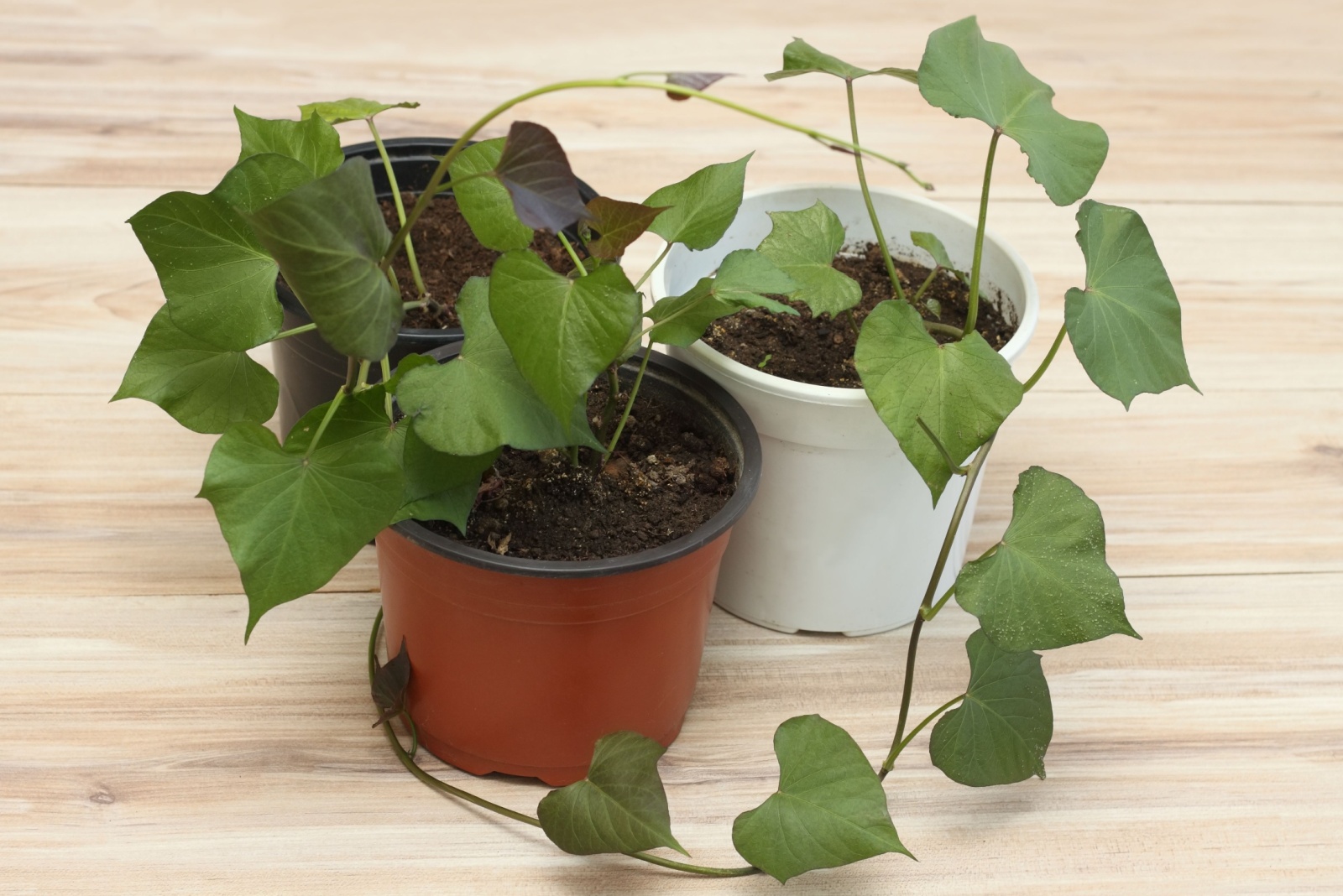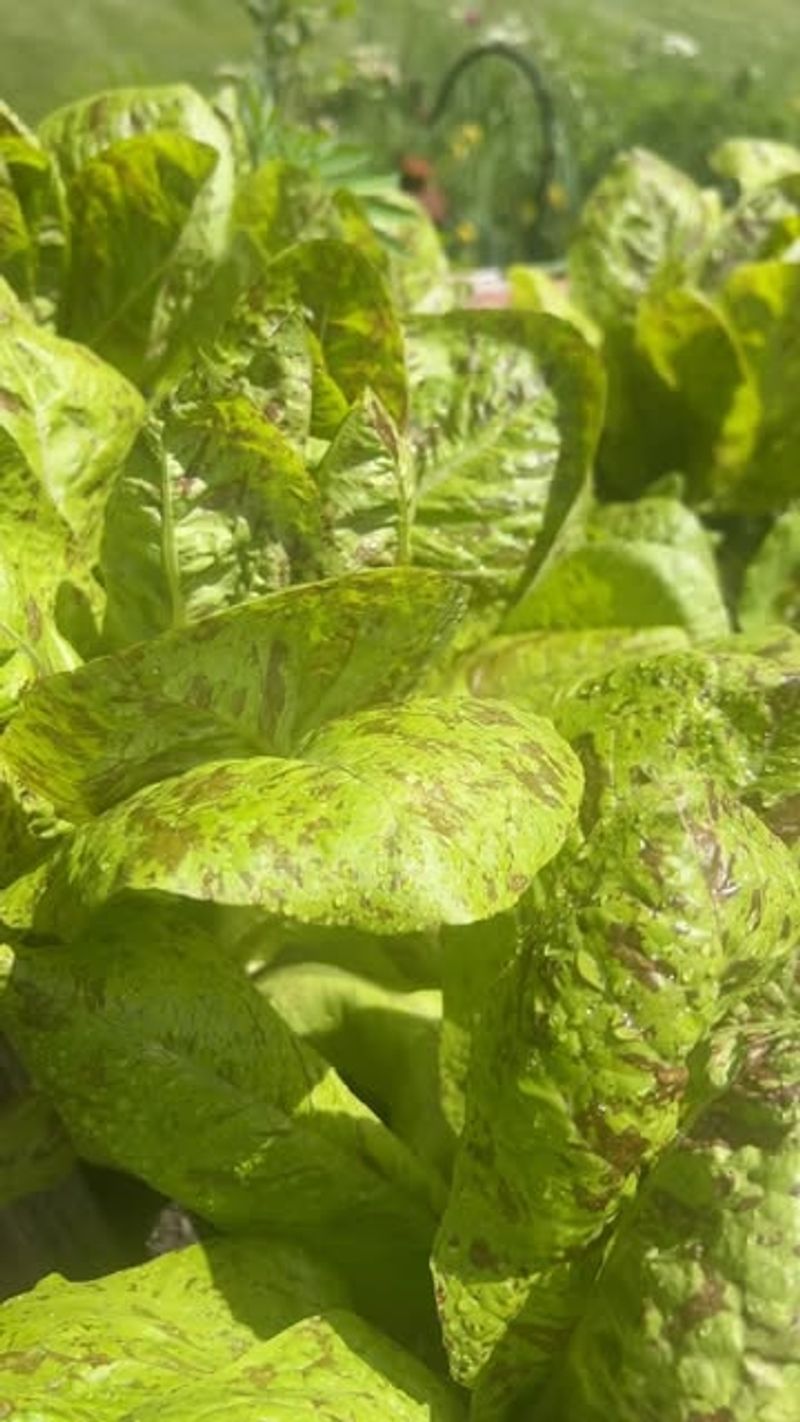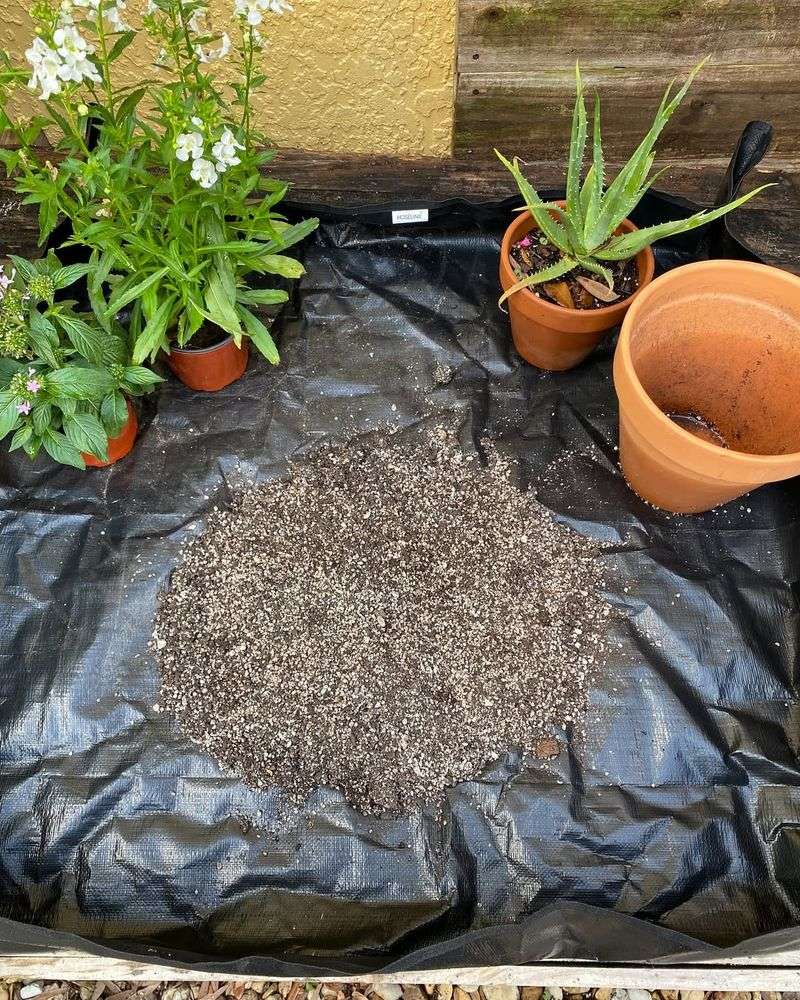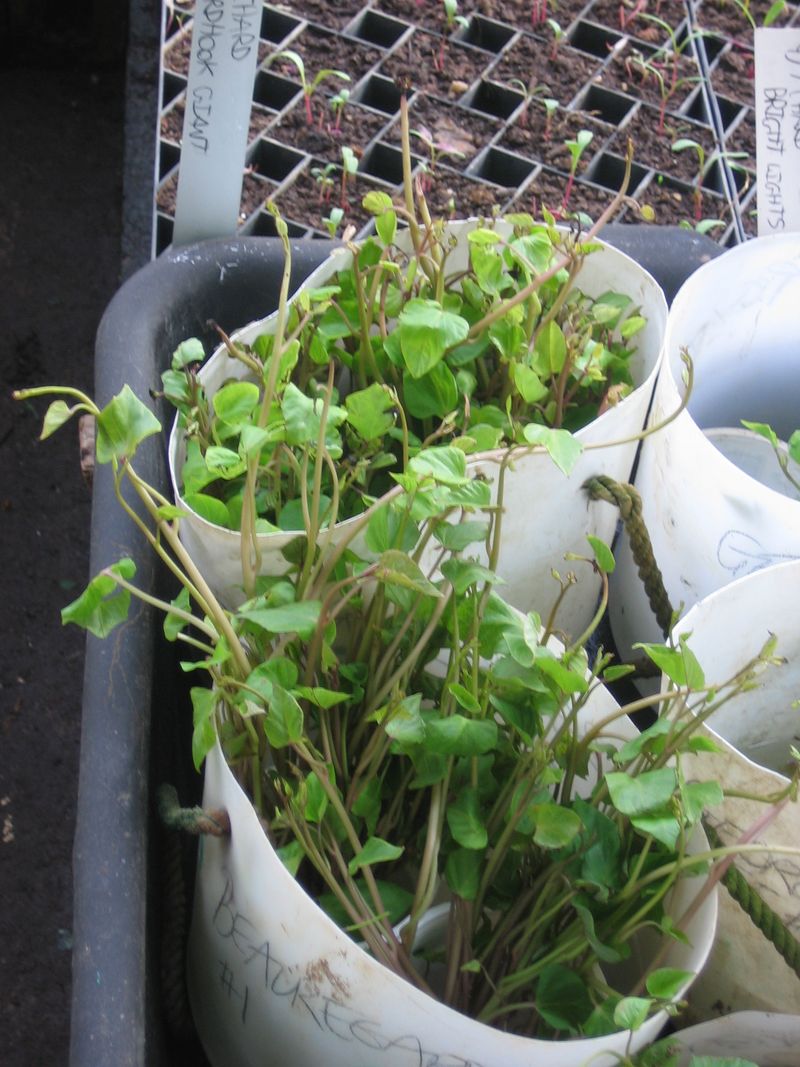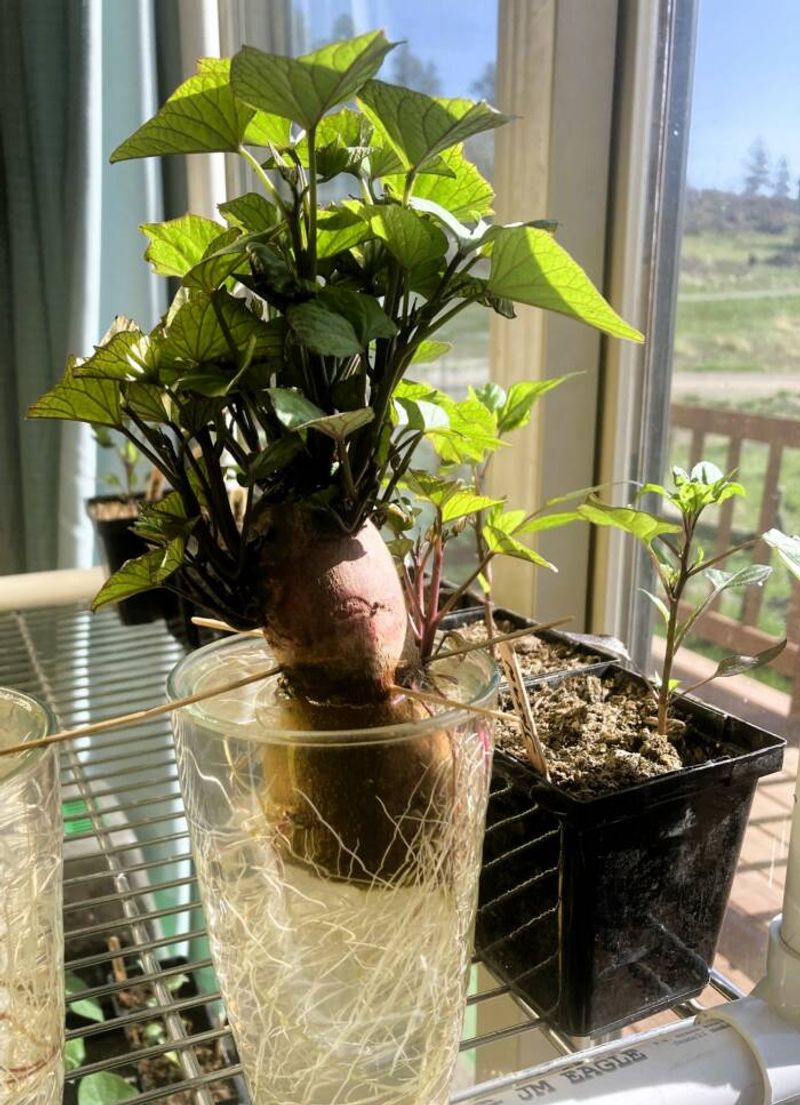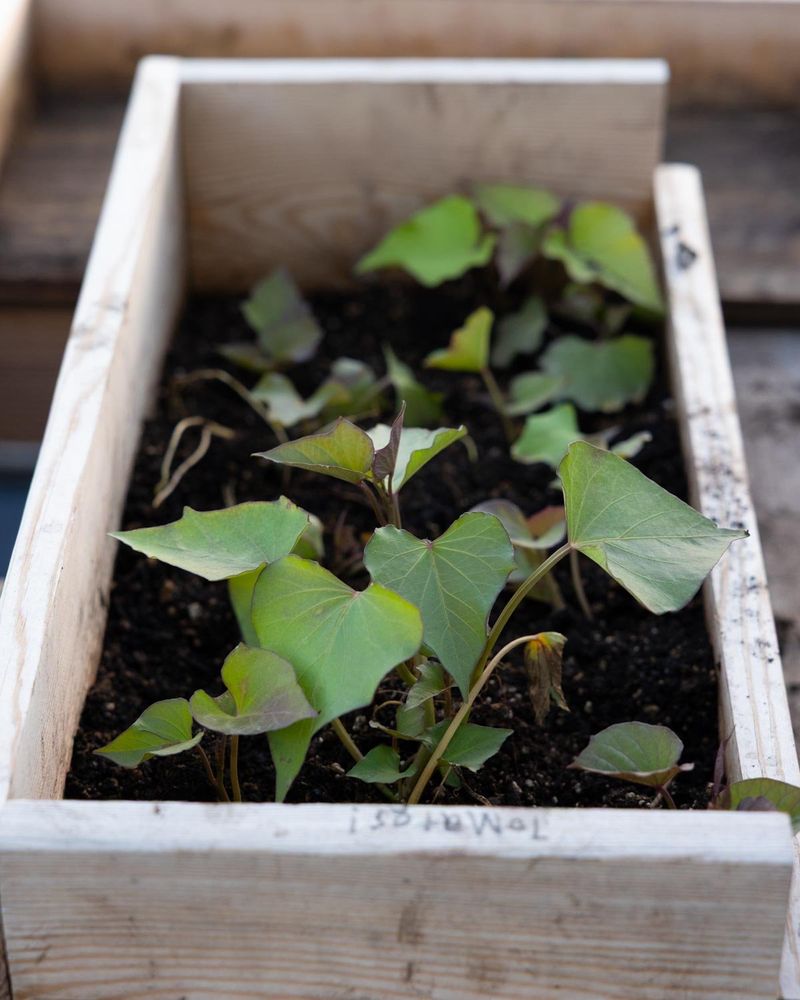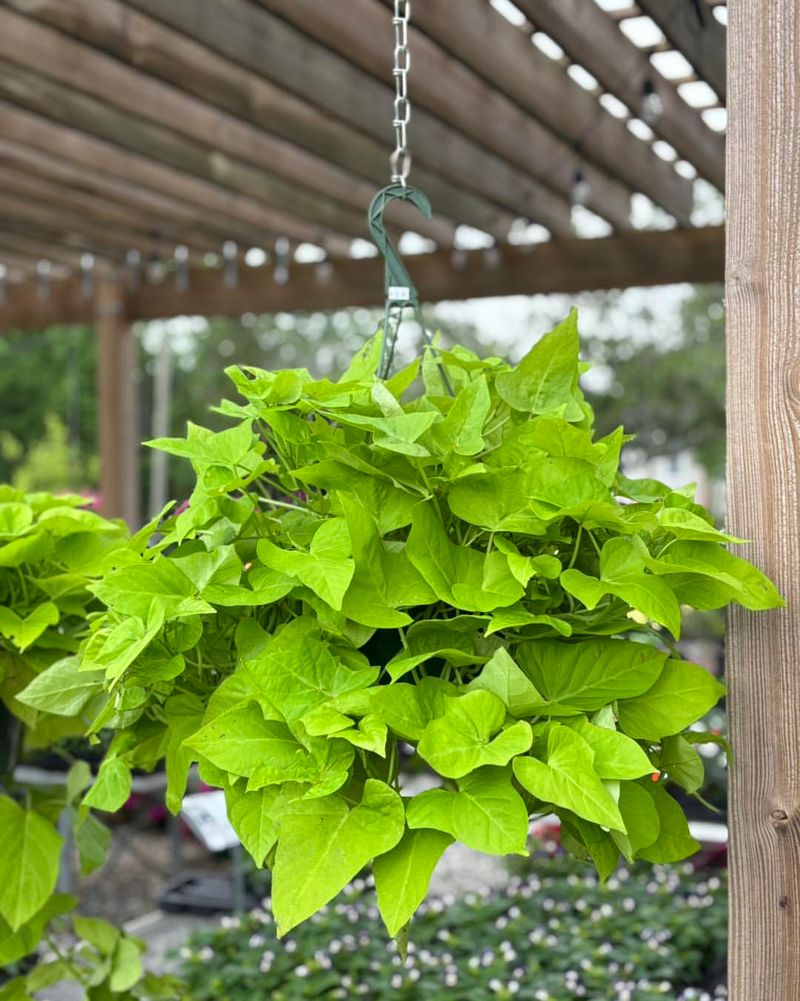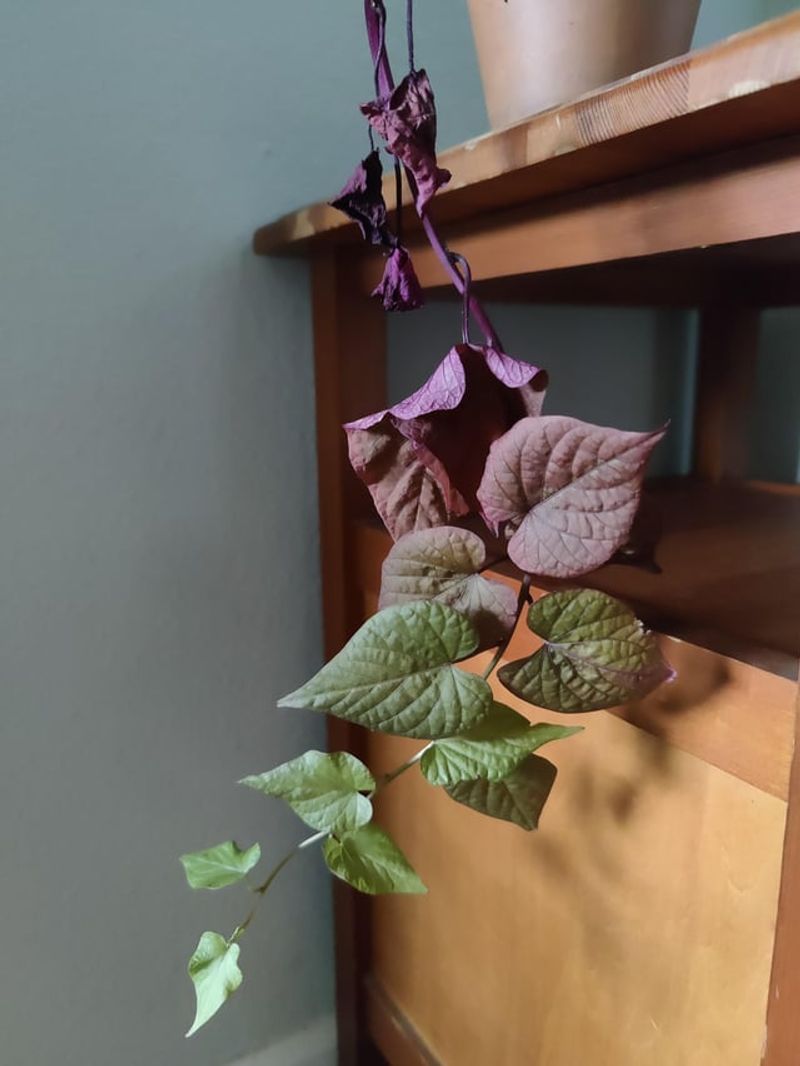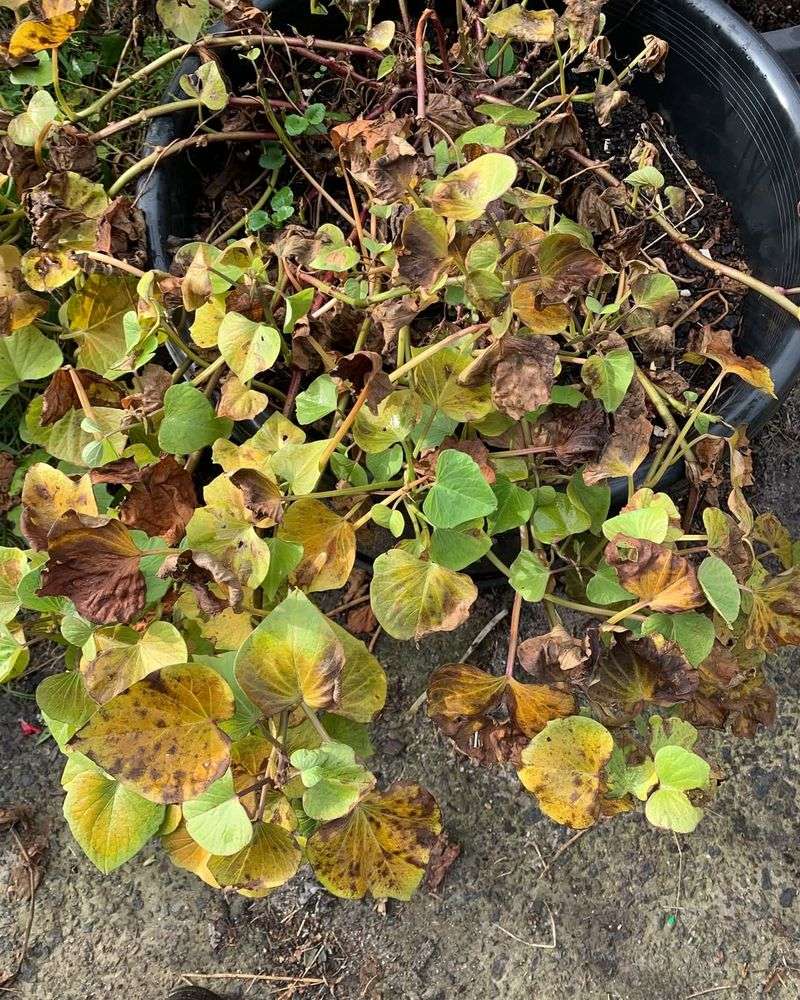Growing sweet potatoes indoors in Minnesota might sound tricky, but it’s actually easier than you think. Even when snow blankets your yard and temperatures drop below freezing, you can still enjoy fresh, homegrown sweet potatoes right in your kitchen or living room.
With a little planning and the right setup, these warm-weather plants adapt surprisingly well to indoor life. Whether you’re a seasoned gardener or just starting out, these simple steps will help you succeed.
1. Start With Healthy Slips
Getting your sweet potato adventure started means finding quality slips, which are the young shoots that grow from a mature sweet potato. You can buy them online or sprout your own by suspending a sweet potato in water using toothpicks.
In my Minnesota home, I found that placing the jar near a south-facing window speeds up sprouting during those dark winter months. Within a few weeks, you’ll see roots and green shoots emerging.
Once slips reach about six inches tall, gently twist them off and they’re ready for planting.
2. Choose The Right Container And Soil
Sweet potatoes need plenty of room to spread their roots, so pick a container that’s at least 12 inches deep and wide. Drainage holes are essential because waterlogged soil quickly leads to root rot, especially in Minnesota’s dry indoor winter air.
Fill your container with loose, well-draining potting mix rather than garden soil. For me, adding a bit of compost helps provide nutrients without making the soil too heavy.
The right foundation makes all the difference in how well your plants grow.
3. Provide Plenty Of Light
Light is probably the biggest challenge when growing sweet potatoes indoors in Minnesota, especially from November through March when daylight hours are limited. Sweet potatoes crave bright light for at least six to eight hours daily to produce healthy vines and tubers.
From experience, I’ve learned that even a sunny window can work wonders, but adding a grow light ensures consistent results. Position lights about 12 inches above the plants and adjust as they grow taller.
This small investment pays off tremendously.
4. Maintain Warm Temperatures Consistently
Sweet potatoes are tropical plants that prefer temperatures between 70 and 80 degrees Fahrenheit, which can be tricky during Minnesota winters when heating systems fluctuate. Keep your containers away from cold drafts near windows or doors that might shock the plants.
I position mine near a heating vent but not directly in the airflow, which keeps them cozy without drying out the leaves. If your home runs cooler, consider using a small space heater in your growing area.
Steady warmth encourages strong root development.
5. Water Carefully And Monitor Moisture
Finding the right watering balance takes practice because sweet potatoes dislike both soggy soil and complete dryness. Check the top two inches of soil regularly, and water when it feels dry to the touch but not bone-dry.
During Minnesota’s heated indoor months, soil dries faster than you might expect, so I usually water every few days. Overwatering is the quickest way to invite fungal problems, so always err on the side of caution.
Good drainage prevents most moisture-related issues.
6. Support The Vines As They Grow
As your sweet potato plants mature, their vines can stretch several feet in all directions, which gets messy without proper support. Installing a small trellis or bamboo stakes helps keep growth manageable and prevents vines from taking over your space.
I like training mine along a decorative ladder leaned against the wall, which adds a living element to my decor while maximizing vertical space. You can also let them trail from a hanging basket if you prefer a cascading look.
Either way, support keeps things tidy.
7. Feed Regularly With Balanced Fertilizer
Sweet potatoes are hungry plants that benefit from regular feeding, especially since container soil depletes nutrients faster than garden beds. Use a balanced liquid fertilizer diluted to half strength every two to three weeks during the growing season.
For me, the biggest challenge was controlling humidity without creating nutrient imbalances, so I stick to organic options that release slowly. Avoid high-nitrogen fertilizers that encourage leafy growth at the expense of tuber development.
Proper nutrition leads to bigger harvests.
8. Harvest When Leaves Begin To Yellow
Knowing when to harvest takes observation because sweet potatoes don’t show obvious signs like other vegetables. Typically, after three to four months, the leaves start yellowing and the vines slow their growth, signaling that tubers are ready.
Gently dig around the edges of your container to check tuber size before committing to a full harvest. I usually wait until I see at least a few good-sized potatoes before pulling everything up.
Handle them carefully to avoid bruising the tender skins during harvest.

